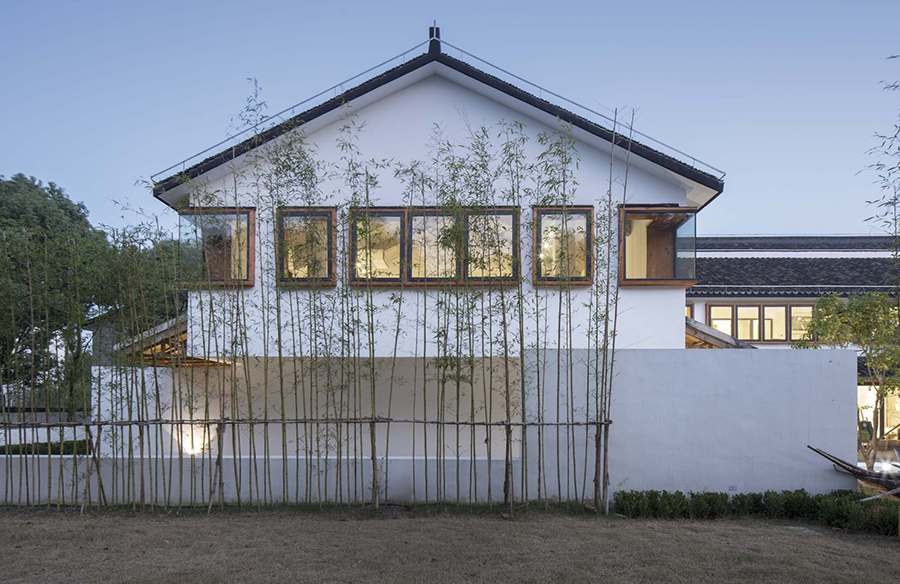Constructed in the 1990s, the village committee building in JiJiaDun Village Center stood as a symbol of authority amidst its serene surroundings. However, its imposing structure, characterized by a double-slope roof and towering walls, starkly contrasted with the organic and open nature of the village. Despite being the only public building, it lacked spaces for communal interaction, creating a disconnect between the residents and their environment.

Bridging Conflicting Realities
The renovation aimed to reconcile the discord between the enclosed building and the open village. By integrating subtle spatial interventions, such as creating entry areas and porches, the back and sides of the buildings were transformed into welcoming spaces. These alterations encouraged interaction and blurred the boundaries between indoor and outdoor realms, fostering a sense of unity within the community.
Spatial Strategies for Transformation
The renovation strategy focused on breaking the rigid symmetry of the building, allowing the main pedestrian road to pass through, and promoting indoor-outdoor connectivity. By opening all sides of the building and emphasizing its urban character, the once static structure was reimagined as a dynamic communal hub that seamlessly merged with its surroundings.

Embracing Ambiguity and Experience
The transformed village center embodies a porous and multifaceted architectural language, challenging conventional perceptions of space. It blurs the distinction between interior and exterior, inviting residents to engage with the built environment on a physical level. Unlike buildings easily consumed through digital media, this structure defies easy categorization, emphasizing the richness of embodied experience over passive consumption.
Reinforcing Human-Architecture Interaction
In emphasizing physical experience over abstract representation, the design prioritizes the interaction between individuals and architecture. By creating a space that demands exploration and engagement, the renovated village center encourages a deeper connection with the built environment, enriching the human experience within architectural spaces.

Conclusion: Redefining Architectural Engagement
The renovation of JiJiaDun Village Center transcends traditional notions of architectural design, prioritizing human interaction and experiential engagement. Through subtle spatial interventions and a focus on physical experience, the once austere structure has been transformed into a vibrant communal space that reflects the values and identity of its inhabitants. In an era dominated by digital consumption, this project serves as a reminder of the enduring importance of embodied experience in shaping our built environment.

























